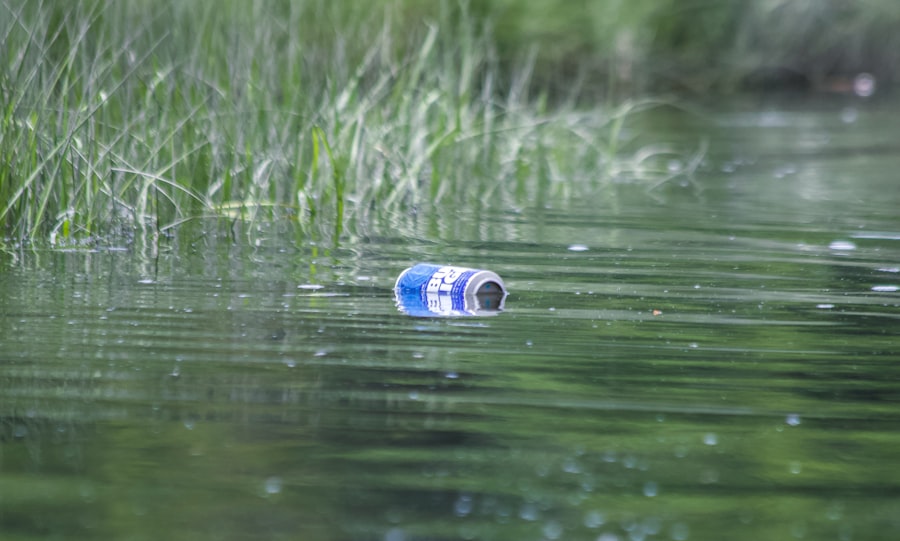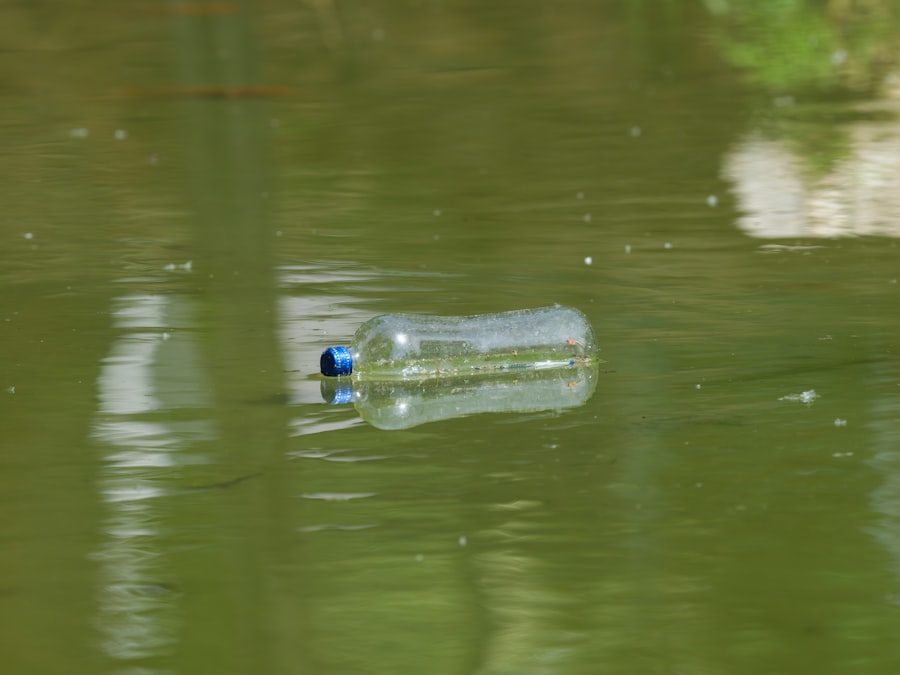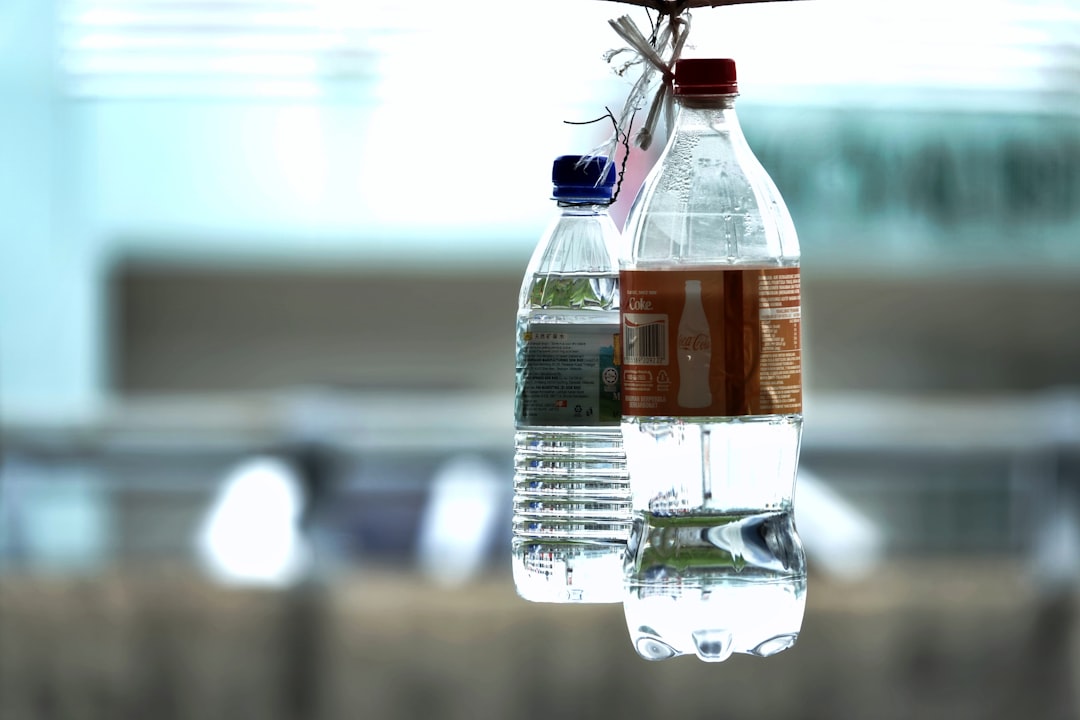Bottled water consumption has surged dramatically over the past few decades, becoming a staple in the daily lives of millions around the globe. This trend reflects a growing preference for convenience and perceived safety, as consumers often view bottled water as a healthier alternative to sugary beverages or tap water. The allure of bottled water lies not only in its portability but also in the marketing narratives that promote it as pure, refreshing, and essential for an active lifestyle.
As a result, the bottled water industry has evolved into a multi-billion-dollar market, with brands competing fiercely for consumer loyalty. However, this rise in bottled water consumption raises critical questions about sustainability and environmental impact. While many individuals may believe they are making a responsible choice by opting for bottled water, the broader implications of this habit are far-reaching.
From the production processes involved in creating plastic bottles to the environmental consequences of their disposal, the bottled water industry presents a complex web of challenges that warrant careful examination. Understanding these issues is essential for fostering informed consumer choices and promoting sustainable practices.
Key Takeaways
- Bottled water production contributes significantly to plastic waste and environmental pollution.
- Marine ecosystems suffer from plastic bottle debris, harming wildlife and biodiversity.
- The bottled water industry is linked to high carbon emissions and exacerbates water scarcity issues.
- Health concerns exist regarding contaminants and chemicals leaching from plastic bottles.
- Sustainable alternatives and stronger government policies are essential to reduce bottled water consumption.
The Production and Disposal of Plastic Bottles
The journey of bottled water begins with the production of plastic bottles, primarily made from polyethylene terephthalate (PET). This process involves extracting crude oil, which is then refined into plastic pellets. These pellets are heated and molded into the familiar shapes of water bottles.
The energy-intensive nature of this production process contributes significantly to the carbon footprint associated with bottled water. Furthermore, the extraction of fossil fuels not only depletes natural resources but also poses risks to local ecosystems and communities. Once consumed, the fate of plastic bottles becomes a pressing concern.
Despite efforts to promote recycling, a staggering percentage of plastic bottles end up in landfills or, worse, in oceans and waterways. The disposal of these bottles is often inefficient, with many consumers unaware of proper recycling practices. As a result, plastic pollution has reached alarming levels, leading to devastating consequences for wildlife and natural habitats.
The challenge lies not only in managing waste but also in addressing the systemic issues that drive excessive plastic production and consumption.
Impact on Marine Life and Ecosystems

The impact of plastic pollution on marine life is profound and alarming. Marine animals often mistake plastic debris for food, leading to ingestion that can cause internal injuries, malnutrition, and even death. Species such as sea turtles, seabirds, and marine mammals are particularly vulnerable to the dangers posed by plastic waste.
Ingested plastics can accumulate in their bodies, leading to toxic effects that disrupt reproductive systems and overall health. The consequences extend beyond individual species; entire ecosystems are affected as the balance of marine life is disrupted. Moreover, microplastics—tiny particles resulting from the breakdown of larger plastic items—have infiltrated marine environments at an unprecedented scale.
These microplastics can be found in the stomachs of fish and other marine organisms, ultimately making their way up the food chain to humans. The implications for human health are still being studied, but concerns about potential toxicity and long-term effects are mounting. The plight of marine life serves as a stark reminder of the interconnectedness of ecosystems and the urgent need for collective action to mitigate plastic pollution.
Carbon Emissions from Bottled Water Production
| Metric | Value | Unit | Notes |
|---|---|---|---|
| CO2 Emissions per Liter of Bottled Water | 0.3 | kg CO2e | Includes production, packaging, and transportation |
| Average Plastic Bottle Weight | 20 | grams | Standard 500ml PET bottle |
| CO2 Emissions from Plastic Production | 2.5 | kg CO2e per kg of PET | Cradle-to-gate emissions for PET plastic |
| Transportation Emissions | 0.05 | kg CO2e per liter | Average emissions for distribution |
| Energy Use in Bottling Process | 0.1 | kWh per liter | Includes water treatment and bottling |
| CO2 Emissions from Energy Use | 0.07 | kg CO2e per liter | Based on average electricity grid emissions |
| Recycling Rate of PET Bottles | 30 | % | Global average recycling rate |
| Reduction in Emissions from Recycling | 1.5 | kg CO2e per kg of recycled PET | Compared to virgin PET production |
The carbon emissions associated with bottled water production are significant and contribute to global climate change. From the extraction of raw materials to transportation and distribution, each stage of the bottled water supply chain generates greenhouse gases. The energy-intensive processes involved in manufacturing plastic bottles and purifying water require substantial fossil fuel consumption, further exacerbating carbon footprints.
Studies have shown that bottled water can have a carbon footprint up to 300 times greater than that of tap water. Transportation also plays a crucial role in emissions; bottled water is often shipped over long distances from production facilities to retail outlets. This reliance on fossil fuels for transportation not only increases carbon emissions but also raises questions about the sustainability of sourcing water from distant locations when local alternatives may be available.
As climate change continues to pose a threat to global ecosystems and human health, addressing the carbon emissions associated with bottled water production becomes increasingly urgent.
Water Scarcity and the Bottled Water Industry
The bottled water industry operates within a complex landscape marked by growing concerns over water scarcity. In many regions, particularly those facing drought or limited freshwater resources, the extraction of groundwater for bottling purposes can exacerbate existing challenges. Companies often draw from aquifers or springs, leading to depletion of local water supplies that communities rely on for drinking and agriculture.
This practice raises ethical questions about prioritizing profit over public access to essential resources. Furthermore, the commodification of water through bottled products can create disparities in access. While some consumers can afford to purchase bottled water regularly, others may struggle to access clean drinking water altogether.
This inequity highlights the need for sustainable management practices that prioritize both environmental conservation and social responsibility. As awareness grows regarding the implications of bottled water extraction on local communities, there is an increasing call for regulations that protect vital water resources.
Health Risks Associated with Bottled Water

While many consumers turn to bottled water under the assumption that it is safer than tap water, research has revealed potential health risks associated with certain bottled products. One concern is the leaching of chemicals from plastic bottles into the water they contain, particularly when exposed to heat or prolonged storage. Substances such as bisphenol A (BPA) and phthalates have been linked to various health issues, including hormonal disruptions and increased cancer risk.
Additionally, bottled water is not always subject to the same rigorous testing standards as municipal tap water. In some cases, bottled water may simply be repurposed tap water that has undergone minimal filtration processes. This lack of transparency can leave consumers unaware of potential contaminants present in their chosen brands.
As public awareness grows regarding these health risks, individuals are increasingly seeking alternatives that prioritize safety and transparency in sourcing.
Alternatives to Bottled Water
In light of the numerous challenges associated with bottled water consumption, various alternatives have emerged that promote sustainability and health. One popular option is reusable water bottles made from stainless steel or glass, which significantly reduce reliance on single-use plastics. These bottles can be filled with tap water or filtered water at home, providing a convenient and eco-friendly solution for hydration on-the-go.
Water filtration systems also offer an effective means of ensuring clean drinking water without resorting to bottled products. Home filtration units can remove contaminants from tap water while retaining essential minerals, providing a safe and cost-effective alternative. Additionally, public initiatives aimed at improving access to clean drinking water through community fountains or refill stations are gaining traction in urban areas, further reducing the demand for bottled water.
The Role of Government Policies in Bottled Water Regulation
Government policies play a crucial role in shaping the landscape of bottled water consumption and its associated impacts. Regulations governing the production and labeling of bottled water vary widely across countries, influencing consumer choices and industry practices. Stricter regulations can help ensure that bottled products meet safety standards while promoting transparency regarding sourcing and environmental impact.
Moreover, governments can implement policies aimed at reducing plastic waste through initiatives such as bans on single-use plastics or incentives for recycling programs. By fostering a culture of sustainability through legislation, policymakers can encourage both consumers and businesses to adopt more responsible practices regarding bottled water consumption. Collaborative efforts between governments, NGOs, and industry stakeholders are essential for creating comprehensive strategies that address the multifaceted challenges posed by bottled water.
Corporate Responsibility and Sustainable Practices
As awareness grows regarding the environmental and social implications of bottled water consumption, corporations within the industry are increasingly recognizing their responsibility to adopt sustainable practices. Many companies are exploring innovative solutions such as biodegradable packaging or investing in recycling technologies to minimize their environmental footprint. Additionally, some brands are committing to sourcing their water responsibly by ensuring that extraction does not deplete local aquifers or harm ecosystems.
Corporate social responsibility extends beyond environmental considerations; companies are also beginning to engage with local communities affected by their operations. Initiatives aimed at providing clean drinking water access or supporting local conservation efforts demonstrate a commitment to ethical practices that benefit both consumers and communities alike. As consumers become more discerning about their choices, businesses that prioritize sustainability are likely to gain a competitive edge in an evolving market.
Consumer Awareness and Behavior Change
Consumer awareness plays a pivotal role in shaping the future of bottled water consumption. As individuals become more informed about the environmental impacts associated with plastic waste and the health risks linked to certain bottled products, there is potential for significant behavior change. Educational campaigns aimed at highlighting the benefits of alternatives such as reusable bottles or filtered tap water can empower consumers to make more sustainable choices.
Social media platforms have emerged as powerful tools for raising awareness about issues related to bottled water consumption. Influencers and activists are leveraging these platforms to advocate for responsible practices while encouraging followers to rethink their hydration habits. By fostering a culture of sustainability through collective action and informed decision-making, consumers can drive demand for more environmentally friendly options within the bottled water industry.
The Future of Bottled Water Consumption
The future of bottled water consumption hinges on a complex interplay between consumer behavior, corporate responsibility, government policies, and environmental sustainability. As awareness grows regarding the myriad challenges associated with single-use plastics and bottled products, there is an opportunity for transformative change within the industry. By embracing alternatives such as reusable bottles and advocating for responsible sourcing practices, individuals can contribute to a more sustainable future.
Ultimately, fostering a culture that prioritizes environmental stewardship requires collaboration among all stakeholders—consumers, businesses, governments, and advocacy groups alike. Through collective efforts aimed at reducing plastic waste and promoting access to clean drinking water, society can work towards a future where hydration is both sustainable and equitable. The path forward may be challenging, but with concerted action and commitment to change, it is possible to reshape the narrative surrounding bottled water consumption for generations to come.
A related article that delves into this topic can be found at Hey Did You Know This, where it discusses the ecological consequences of plastic waste and the importance of sustainable alternatives. By raising awareness about the hidden costs of bottled water, we can encourage more responsible consumption and promote eco-friendly practices.
WATCH THIS! The $400 Billion Water Lie: Why Bottled Water Is a Scam
FAQs
What is the environmental impact of bottled water?
Bottled water has significant environmental impacts, including the use of large amounts of plastic, energy consumption during production and transportation, and the generation of plastic waste that often ends up in landfills or oceans.
How does bottled water contribute to plastic pollution?
Bottled water is typically packaged in single-use plastic bottles made from polyethylene terephthalate (PET). Many of these bottles are not recycled properly, leading to plastic pollution in natural environments, harming wildlife and ecosystems.
What resources are used in the production of bottled water?
The production of bottled water requires water for the product itself, as well as water and energy for manufacturing the plastic bottles. Additionally, fossil fuels are used in the extraction of raw materials and transportation of bottled water.
Is bottled water more environmentally harmful than tap water?
Yes, bottled water generally has a higher environmental footprint than tap water due to the packaging, transportation, and production processes involved. Tap water typically requires less energy and generates less waste.
Can recycling reduce the environmental impact of bottled water?
Recycling can help reduce the environmental impact by decreasing the demand for new plastic production and reducing waste. However, recycling rates for plastic bottles vary widely, and not all bottles are recycled effectively.
What alternatives exist to reduce the environmental impact of bottled water?
Alternatives include using reusable water bottles, drinking tap water where safe, and supporting water filtration systems. These options reduce plastic waste and lower the overall environmental footprint.
How does bottled water transportation affect the environment?
Transportation of bottled water, often over long distances, consumes fossil fuels and emits greenhouse gases, contributing to climate change and air pollution.
Are biodegradable or plant-based bottles a solution to the environmental impact?
Biodegradable and plant-based bottles may reduce reliance on fossil fuels and improve decomposition rates, but they still require energy to produce and may not break down effectively in all environments. Their overall environmental benefits depend on production methods and disposal practices.
